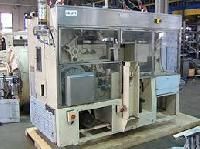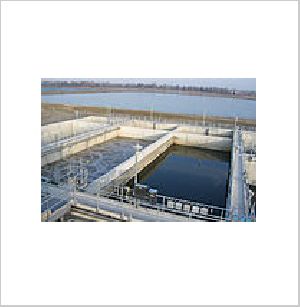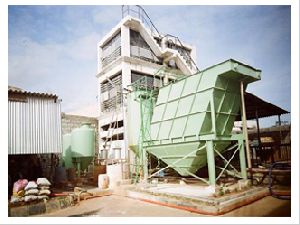
Water Treatment Plant
Hard water is formed by Calcium and Magnesium minerals dissolving in the rain water as it passes down through the layers of lime stone and is directly proportional to the quantity of these minerals absorbed.When hard water is used in commercial or industrial applications, problem will be encountered with scale and scum both with costly consequences.In the softening plant ion-exchange technology is used to remove the calcium and magnesium by replacing them with non-hardness forming Sodium. FEATURES1. Free standing unit2. High grade Post-sales Service3. Easy Servicing4. Easy Handling5. Low regeneration time6. Simple maintenance
...more
Tube Settler Media
Tube settlers and parallel plates increase the settling capacity of circularrectangular clarifiers by reducing the vertical distance a floc particle must settle before agglomerating to form larger particles. This is based on settlement of colloidal particles by providing a larger surface area. Tube settlers use multiple tubular channels sloped at an angle of 60° and adjacent to each other, which combine to form an increased effective settling area.
...more
Soap Stamping Machines

Soap Making Machinery

Sewage Treatment Plant
Sewage Treatment Plant, or domestic wastewater treatment, is the process of removing contaminants from wastewater and household sewage, both runoff (effluents) and domestic. The task of designing and constructing facilities for treating wastewaters falls to environmental engineers.Sewage is created by residential, institutional, and commercial and industrial establishments. It includes household waste liquid from toilets, baths, showers, kitchens, sinks and so forth that is disposed of via sewers.
...more
Sequential Batch Reactor
Sequencing batch reactor or sbr is a new technology for the treatment of domestic and industrial waste water. It is ideal for treatment of wide range of domestic and industrial waste water at flow ranging from few thousand liters to millions of liters per day. The sbr process treats wastewater by activated sludge process.The Sequencing Batch Reactor (SBR) is an activated sludge process designed to operate under non-steady state conditions. An SBR operates in a true batch mode with aeration and sludge settlement both occurring in the same tank. The major differences between SBR and conventional continuous-flow, activated sludge system is that the SBR tank carries out the functions of equalization aeration and sedimentation in a time sequence rather than in the conventional space sequence of continuous-flow systems. In addition, the SBR system can be designed with the ability to treat a wide range of influent volumes whereas the continuous system is based upon a fixed influent flowrate. Thus, there is a degree of flexibility associated with working in a time rather than in a space sequence. ADVANTAGES:1. High Efficiency of the plant2. Applicable even large capacity plant3. High Retention time increases the efficiency of the plant4. Sludge recycling is required5. Bio-sludge can be used as manure for garden6. Good control of the system since it is a batch process
...more
Rotating Biological Contactor
RBC is rotated slowly by an electrical motor (geared box) & is arranged in the bioreactor tank in such a way that its half portion is always submerged in the effluent/ sewage. The RBC rotates, the surface of the media is subjected alternately to wastewater/ Sewage and air which encourages an aerobic digestion of organic matter & forms biologically active film of micro-organisms (biomass).(e.g. & picture pending) ADVANTAGES:1. High Efficiency of the plant2. Less space requirement3. Package plant4. Sludge recycling is not required5. Less quantity of sludge generation6. Bio-sludge can be used as manure for garden7. Effectively work for small capacity plant8. Do not require Air Blowers
...more
Membrane Biofilters
A membrane is defined as a material that forms a thin wall (tubes) capable of selectively resisting the transfer of different constituents of a fluid and thus effecting a separation, of the constituents. The optimal physical structure of the membrane material is based on a thin layer of material with a narrow range of pore size and a high surface porosity. In wastewater treatment applications, these membranes process are more effective in removal of particles and microorganisms. Membrane Bioreactor (MBR) systems essentially consists of combination of membrane and biological reactor systems. These systems are the emerging technologies, currently developed for a variety of advanced wastewater treatment processes. Membrane bioreactor systems combine proven ultrafiltration technology with biological treatment for municipal, commercial and industrial wastewater treatment and water reuse applications. The membrane bioreactor system incorporates reinforced hollow fiber membranes specifically designed to meet the requirements of wastewater treatment. Membrane bioreactor systems replace conventional treatment and combine clarification, aeration and filtration into a simple and cost-effective process that reduces capital and operating costs. The result is consistent, high quality effluent suitable for any discharge or reuse application ADVANTAGES* Plant retrofits* Bio-phosphorus removal* Bio-nitrogen removal* Reverse osmosis pretreatment* Direct reuse* Direct discharge* Aquifer recharge* Small, medium and large plants* Membrane bioreactor technology effectively overcomes the problems associated with poor settling of sludge in conventional activated sludge processes* Membrane filter assure very high quality colorless effluent/ sewage* Can avoid Sand filter & Carbon for tertiary treatment can be recycled easily.
...more
Lamella Clarifier with Tube Settlers
Tube settlers and parallel plates increase the settling capacity of circular/rectangular clarifiers by reducing the vertical distance a floc particle must settle before agglomerating to form larger particles. This is based on settlement of colloidal particles by providing a larger surface area.Tube settlers use multiple tubular channels sloped at an angle of 60° and adjacent to each other, which combine to form an increased effective settling area. This provides for a particle settling depth that is significantly less than the settling depth of a conventional clarifier, reducing settling times. Tube settlers capture the settleable fine floc that escapes the clarification zone beneath the tube settlers and allows the larger floc to travel to the tank bottom in a more settleable form. The tube settler's channel collects solids into a compact mass which promotes the solids to slide down the tube channel. ADVANTAGES1. High Settling rate2. Settling of smaller flocs also3. Tube Settler media increases the settling area hence area required compared to Conventional Clarifier is less than half
...more
Effluent Treatment Plant
The effluent after primary treatment will be subjected to secondary treatment. The major goal of this treatment is to remove soluble Organic Pollutants by oxidation & settling. This involves bringing the active microbes in contact with waste water which consume the impurities as food. These organisms; in presence of Oxygen (O2), convert the biodegradable organic matter into Carbon Di Oxide (CO2) water, more cell material and other inert products. With the help of this the total BOD reduction will be 90-95%.
...more
Soap Machines

Stamping Machines

Soda Making Machinery
Be first to Rate
Rate ThisOpening Hours